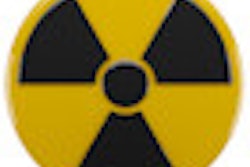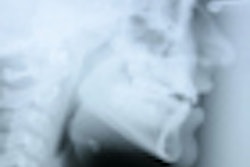
The U.S. Food and Drug Administration's (FDA) hearings last week on medical radiation dose represent the agency's serious intentions to resolve the dose dilemma, according to participants at the hearings.
The FDA convened the hearings for March 30-31 to address the agency's growing concerns over medical radiation dose. Recent studies indicate that the U.S. population's exposure to medical radiation has risen steadily over the past several decades, and in the past year the medical field has also witnessed a series of high-profile errors involving both diagnostic and therapeutic uses of radiation.
At the hearings, FDA officials heard a wide array of testimony representing speakers from organized radiology, imaging device vendors, individual radiologists, and government agencies. Also testifying was a former FDA staffer who claimed that the agency brushed aside his concerns over the radiation dose that would be delivered by a virtual colonoscopy product whose 510(k) application he was reviewing.
Dental implications
The hearings have relevance for dentistry as well, according to Allan Farman, B.D.S., M.B.A., Ph.D., D.Sc., a professor of radiology and imaging science at the University of Louisville in Kentucky and president of the American Academy of Oral and Maxillofacial Radiology (AAOMR).
"There have been real problems, especially at the state regulation level, and patients have suffered and even died because of overdosage when it comes to radiation therapy," he told DrBicuspid.com. "There is also the issue of self-referral for medical multislice CT by nonradiologists who can own such systems, and also issues concerning excessive exposure from medical fluoroscopy. In the public mind, these high-dose medical and therapeutic uses of radiation are not always differentiated from the relatively low doses used in dentistry. Hopefully, this issue will be clarified by the reports from the FDA hearings."
Most of the testimony at the hearings was constructive, according to Stephen Balter, Ph.D., of Columbia University Medical Center in New York City. Balter testified on both days of the hearings, representing both the National Council on Radiation Protection and Measurements and the Society of Interventional Radiology.
"I think the basic attitude at this meeting is that people are trying to cooperate and trying to improve the patient's situation, and discuss what can be done to manage patient dose," Balter said.
The first day of the hearings focused on equipment features that vendors could incorporate into their products to reduce radiation dose, with CT the topic of the morning's sessions and fluoroscopy discussed in the afternoon.
On the second day, testimony addressed what manufacturers can do to improve the training of personnel who use imaging equipment, as well as possible improvements in the quality assurance process at facilities using CT and fluoroscopy.
In her testimony, Carolyn Meltzer, M.D., advocated that research to improve imaging and bioengineering technologies was a critical component to improve quality, safety, and efficiency, and she recommended new federal funding to support much-needed initiatives. Speaking as chair of the academic council of the Academy of Radiology Research and its Coalition for Imaging and Bioengineering Research, Dr. Meltzer emphasized the need to carefully research and validate lower-dose strategies.
Dr. Meltzer recommended establishing standardized methods to translate machine-based exposure parameters into accurate estimates of patient exposure; developing and testing postprocessing methods, such as iterative reconstruction, to create high-fidelity images at lower radiation doses; and developing and testing methods to provide fail-safe procedures.
Dr. Meltzer also recommended federal support to demonstrate the use of best-practice data, protocols, and procedures in all clinical settings and throughout the medical device industry. She emphasized that inclusion of radiation dose exposure information should be an essential component of every patient's electronic medical record.
Guidelines needed
To some extent, the FDA is in a difficult position because much of the solution to the dose dilemma can only be solved through behavior modification among users of imaging equipment, and regulating healthcare providers is not within the agency's legislative mandate.
Richard Morin, Ph.D., chair of the American College of Radiology (ACR) Safety Committee, acknowledged that what's needed is a fundamental change in the way radiology professionals do their jobs.
"What is apparent from this meeting is that the culture of radiation awareness needs to change. Rather than just order a procedure and perform the diagnostic exam, there needs to be a cultural transformation," Morin said. "Does the patient need the procedure? Is the procedure ordered the most appropriate one, and is the radiation dose exposure clinically justified? Do the imaging protocols and their associated radiation doses compare with the national averages that will be available in the national dose registries that the ACR is implementing?"
Dr. Farman agreed. "There is a need to focus on minimizing the dental use of ionizing radiation to as low as is reasonable achievable. For this to occur, there is a need to establish image selection criteria where they presently are not in place. The AAOMR is partnering with several other associations in organized dentistry to develop such guidelines. Dental radiographs should only be taken where there is a diagnostic or treatment guidance necessity."
Adapted from a story on AuntMinnie.com by Brian Casey and Cynthia E. Keen.
Copyright © 2010 DrBicuspid.com



















